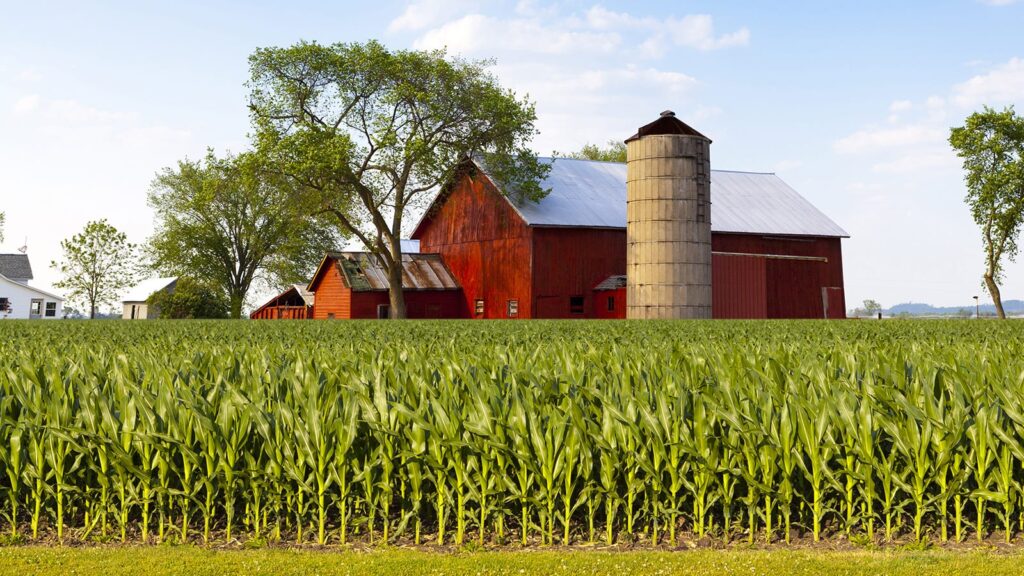
Agricultural land values in Alabama are currently shaped by various factors such as economic conditions, technological advancements like precision agriculture, and shifts towards sustainable farming practices. These trends indicate a dynamic environment in the state’s agricultural sector, highlighting the complexities and opportunities present.
Key Takeaways
- Economic conditions in Alabama affecting land values.
- Technological advancements impacting land productivity.
- Shifts towards sustainable farming practices in the state.
- Market demand and supply dynamics influencing land values.
- Government policies and regulations shaping land values trends.
Factors Influencing Land Values
In the domain of agricultural land values in Alabama, numerous factors play a pivotal role in determining the fluctuation and stability of these values. One of the primary factors influencing land values is the overall economic conditions, including interest rates, inflation, and market demand. Economic stability encourages investment in agriculture, leading to an increase in land values. Additionally, the proximity to urban areas and infrastructure development play a vital role in land values, with lands closer to cities or with good transportation links commanding higher prices. Furthermore, government policies and regulations, such as zoning laws, property taxes, and subsidies, also play an essential role in shaping agricultural land values. Changes in these policies can either increase or decrease the value of agricultural lands. Additionally, environmental factors like soil quality, water availability, and climate conditions are essential determinants of land values, especially regarding agricultural productivity and sustainability.Technology Impact on Agriculture
The advancement of technology has revolutionized the agricultural sector, enhancing efficiency and productivity in farming practices. In Alabama, the adoption of various technological innovations has greatly impacted agricultural operations. One key area where technology has made a profound impact is in precision agriculture. Through the use of GPS technology, farmers can now precisely monitor and manage their fields, leading to optimized planting, irrigation, and application of fertilizers and pesticides. Drones have also become valuable tools in agriculture, providing farmers with aerial views of their fields to assess crop health and detect potential issues early on. Furthermore, the integration of data analytics and artificial intelligence has enabled farmers to make data-driven decisions, leading to improved yields and cost savings. Automation technologies, such as robotic milking machines and automated tractors, have streamlined labor-intensive tasks, increasing efficiency on farms. As technology continues to advance, its role in shaping the future of agriculture in Alabama will be pivotal in meeting the demands of a growing population and ensuring sustainable farming practices.Economic Trends and Land Values
Amidst shifting market dynamics, the economic landscape in Alabama’s agricultural sector is witnessing notable fluctuations in land values. Factors such as changes in commodity prices, trade policies, interest rates, and government subsidies play an important role in influencing the value of agricultural land in the state. In recent years, Alabama has experienced a mix of challenges and opportunities that have impacted land values. For instance, uncertainties surrounding international trade agreements have led to volatility in crop prices, directly affecting the profitability and attractiveness of investing in agricultural land. Moreover, the state’s overall economic health, including factors like employment rates and consumer spending, also contributes to the fluctuations in land values. As the agricultural sector remains a vital part of Alabama’s economy, changes in key economic indicators can have a significant impact on the demand for agricultural land. Investors, farmers, and policymakers closely monitor these economic trends to make informed decisions regarding land transactions and agricultural development projects. Keeping up to date with the economic landscape is important for understanding the current state of Alabama’s agricultural land values.Shifts in Farming Practices
Shifts in farming practices in Alabama’s agricultural sector are becoming increasingly evident as advancements in technology and sustainability drive changes in how land is utilized. One notable shift is the adoption of precision agriculture techniques, which involve using GPS technology and data analytics to optimize crop yields while minimizing inputs such as water, fertilizer, and pesticides. This approach not only boosts efficiency but also diminishes environmental impact. Additionally, there is a growing trend towards organic and regenerative farming practices in Alabama. Farmers are increasingly focusing on soil health, biodiversity, and natural resource conservation to guarantee the long-term sustainability of their operations. This shift is not only propelled by consumer demand for organic products but also by a desire to safeguard the land for future generations. Furthermore, the integration of cover crops, crop rotation, and integrated pest management strategies are becoming more common in Alabama as farmers seek to enhance soil quality, reduce erosion, and decrease reliance on synthetic chemicals. These practices not only benefit the environment but also contribute to the overall resilience of agricultural operations in the face of changing climatic conditions.Land Use Regulations Impact
Land use regulations in Alabama exert a significant influence on the agricultural landscape, shaping the ways in which land is utilized for farming activities. These regulations play a vital role in determining the overall productivity and sustainability of agricultural land in the state. Here are four key points highlighting the impact of land use regulations on Alabama’s agricultural sector:- Zoning Restrictions: Zoning laws dictate where agricultural activities can take place, affecting the type and scale of farming operations in different regions.
- Conservation Requirements: Regulations related to conservation practices influence land management decisions, such as the implementation of erosion control measures and wetland preservation.
- Development Policies: Restrictions on land development can impact the availability of farmland, influencing land prices and the consolidation of agricultural properties.
- Environmental Regulations: Rules governing environmental protection, such as water quality standards and pesticide usage, directly impact farming practices and production costs.
Market Demand and Supply Dynamics
With changing consumer preferences and economic conditions, the interplay between market demand and supply dynamics greatly influences the agricultural land values in Alabama. Factors such as population growth, shifts in consumer preferences towards locally sourced products, and economic policies impact the demand for agricultural land. Alabama’s diverse agricultural sector, including crops like cotton, soybeans, and poultry, attracts both local and international market demand. Additionally, the state’s favorable climate and soil conditions further contribute to the demand for agricultural land. On the supply side, various factors such as land availability, technological advancements, and government policies regulating land use play an essential role. The limited availability of arable land due to urbanization and industrialization can exert upward pressure on agricultural land values. Additionally, advancements in agricultural technology have increased productivity, potentially affecting the supply of agricultural land needed to meet market demands. Understanding the complex relationship between market demand and supply dynamics is critical for stakeholders in the agricultural sector to make informed decisions regarding investments, land use planning, and policy development to sustainably manage agricultural land values in Alabama.Environmental Concerns and Values
Given the interconnected nature of agricultural land values with environmental factors, the consideration of environmental concerns and values becomes increasingly significant in shaping the sustainability of Alabama’s agricultural sector. Alabama’s agricultural community is facing several key environmental challenges that are influencing land values and overall productivity:- Water Quality: Ensuring clean and sufficient water sources for agricultural activities is essential for maintaining land productivity and minimizing environmental degradation.
- Soil Health: Preserving soil quality through practices like crop rotation and conservation tillage not only enhances land value but also promotes long-term agricultural sustainability.
- Climate Change Resilience: Developing strategies to mitigate the impacts of climate change, such as extreme weather events and shifting growing seasons, is vital for safeguarding agricultural land values.
- Biodiversity Conservation: Protecting natural habitats and promoting biodiversity on agricultural lands can enhance ecosystem services, improve crop pollination, and increase overall land resilience.
